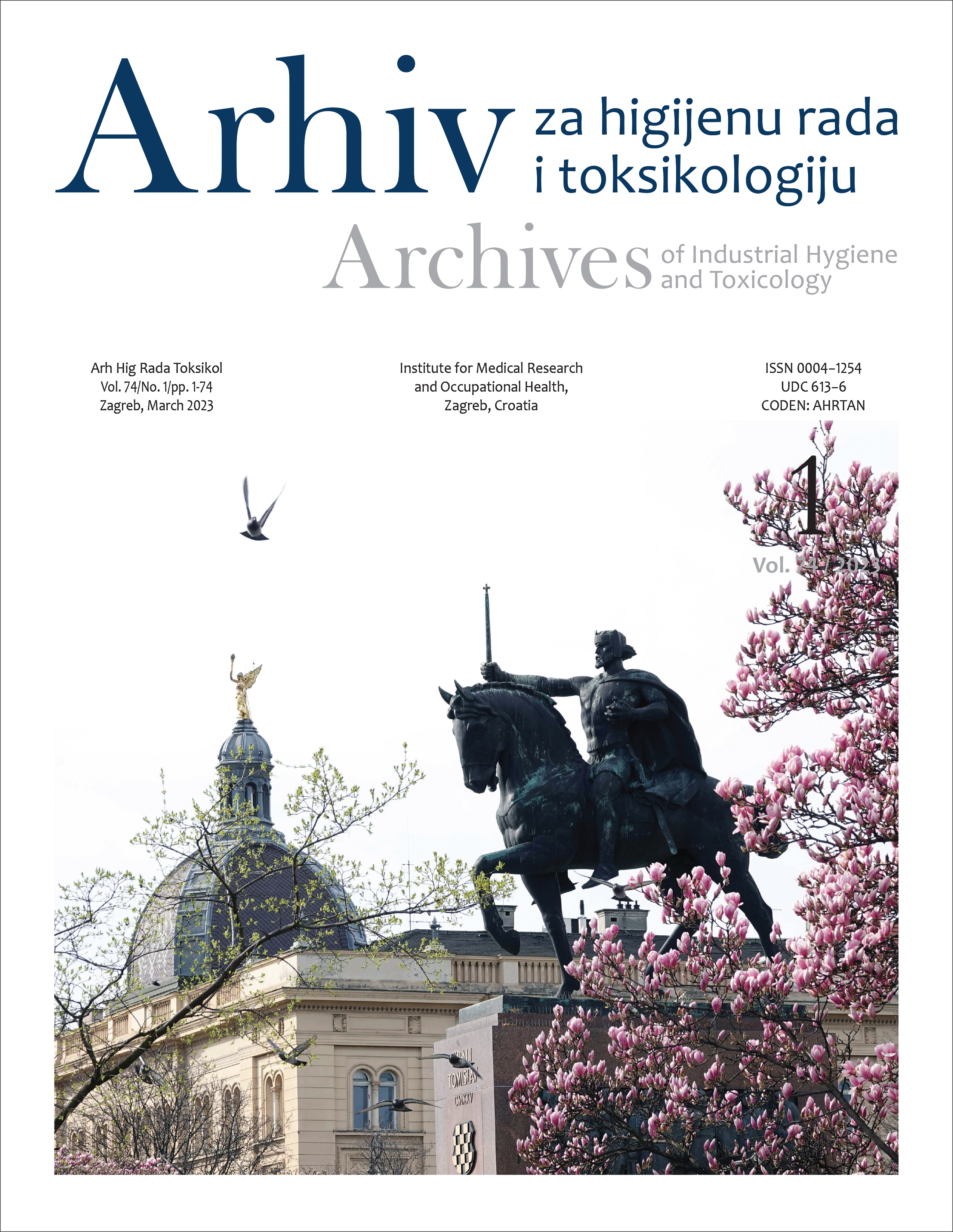Short-term effects of air pollution on hospital admissions for cardiovascular diseases and diabetes mellitus in Sofia, Bulgaria (2009–2018)
DOI:
https://doi.org/10.2478/aiht-2023-74-3704Keywords:
exacerbation, ischemic heart disease, particulate matter, stroke, time-series, type 2 diabetes mellitusAbstract
Bulgaria has a very high incidence of cardiometabolic diseases and air pollution-related mortality rate. This study investigated the relationship between daily air pollution levels and hospital admissions for ischaemic heart diseases (IHD), cerebral infarction (CI), and type 2 diabetes mellitus (T2DM) in Sofia, Bulgaria. We obtained daily data on hospitals admissions and daily average air pollution levels from 2009 to 2018. Pollutants of interest were particulate matter (PM2.5 and PM10), nitrogen dioxide (NO2), sulphur dioxide (SO2), ozone (O3), and carbon monoxide (CO). Negative binomial regressions were fitted to study the effects of air pollution on hospital admission over the course of seven days prior to that event, accounting for autocorrelations and time trend in the data, day of the week, temperature, and relative humidity. Our findings confirm that higher air pollution levels generally increase the risk of hospital admissions for IHD and CI. For T2DM the association is less clear. Admissions often lagged several days behind and were more common in specific demographic subgroups or when pollution crossed a particular threshold. However, we did not expect to find the risk of hospital admissions increased in warmer rather than colder months of the year. Our findings are to be taken with reservation but do provide an idea about how air pollution could trigger acute episodes of related cardiovascular diseases, and our model may serve to investigate similar associations across the country.














